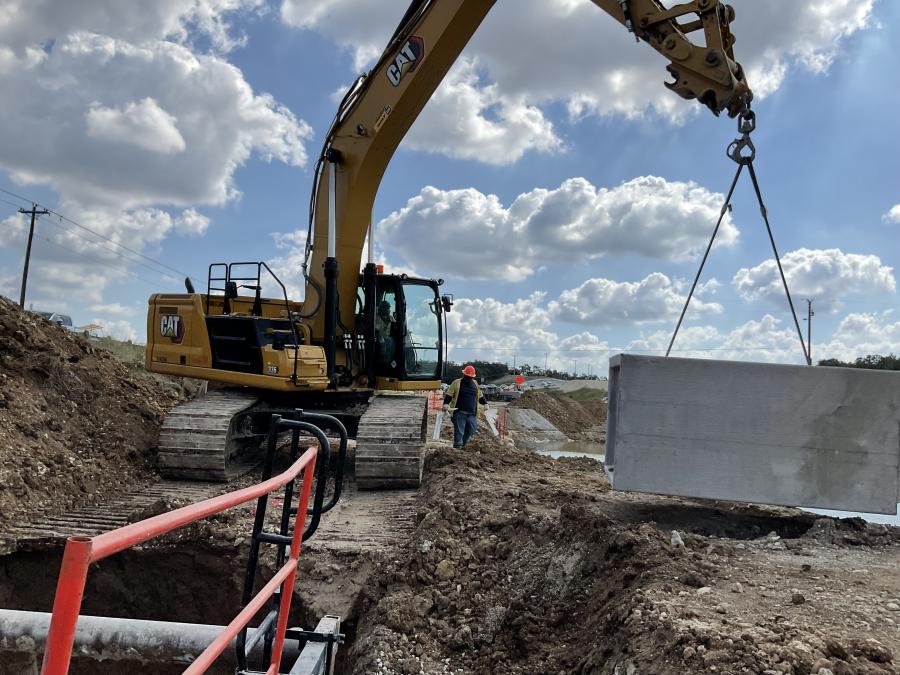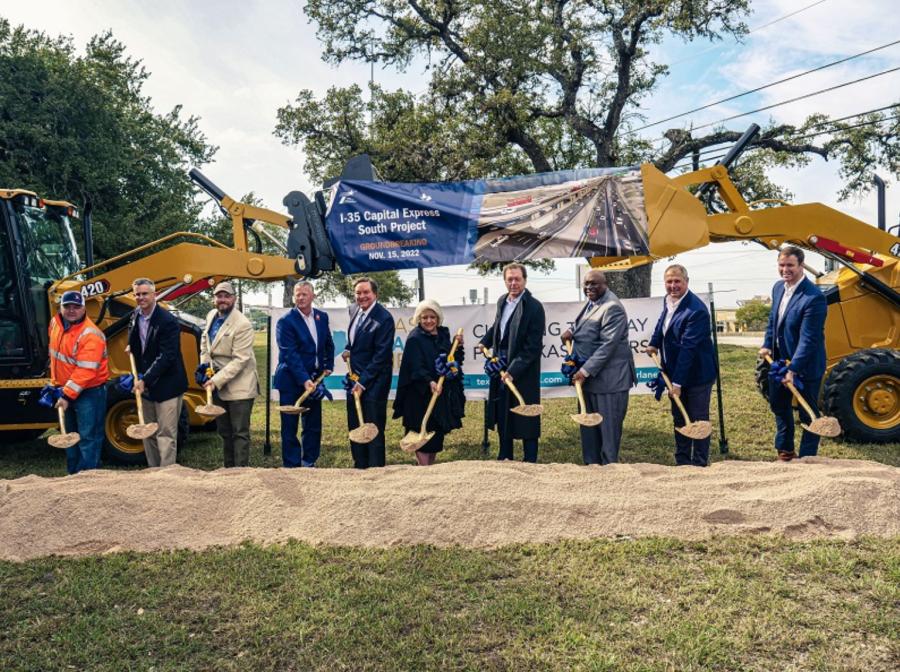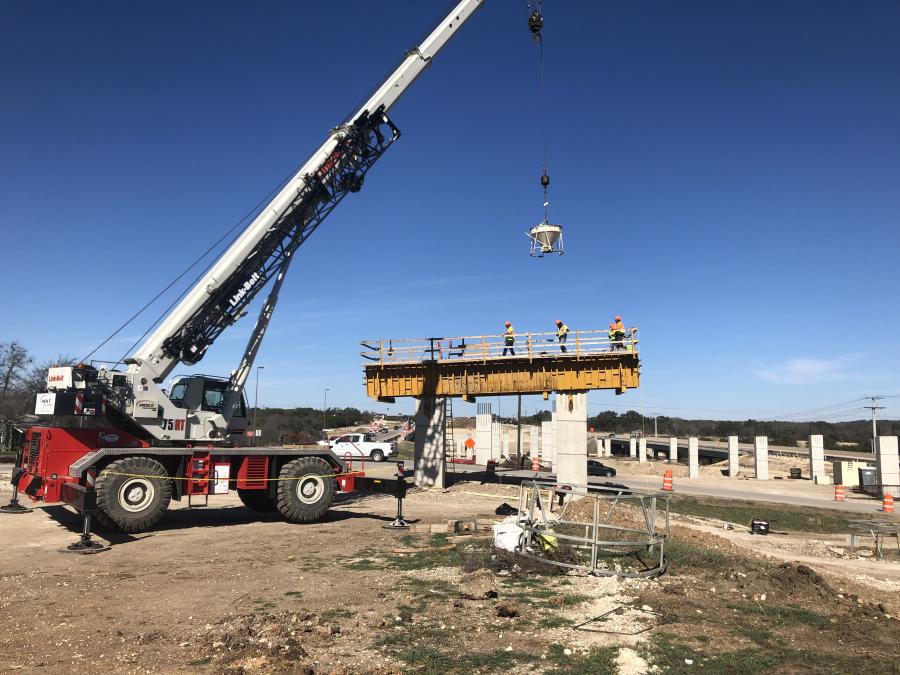Texas is investing more than $4 billion for its I-35 Capital Express Program (CAP) in Austin, an initiative that has been divided into three segments: North, Central and South.
(TxDOT photo)
Fluor Corporation began work on the Texas Department of Transportation's (TxDOT) $548 million I-35 Capital Express South project, which is part of the multi-billion dollar I-35 Capital Express program taking place in Austin.
The work began last November and is expected to be completed in late 2028. Construction is funded by the Capital Area Metropolitan Planning Organization (CAMPO) and TxDOT.
TxDOT is investing more than $4 billion for its I-35 Capital Express Program (CAP) in Austin, an initiative that has been divided into three segments: North, Central and South.
"It is always gratifying to [work] on a new project that will provide relief from traffic congestion and improve mobility and safety," said Thomas Nilsson, president of Fluor's infrastructure business. "This project reinforces Fluor's commitment to deliver quality infrastructure and supports economic development and commerce in Texas. This is the first in a series of vital infrastructure projects to rebuild the I-35 corridor in response to business and population expansion in Austin, one of the country's fastest growing regions."
The South project is adding two non-tolled high-occupancy vehicle managed lanes in each direction along I-35 from SH 71/Ben White Boulevard to SH 45 Southeast; elevating the HOV lanes between SH 71/Ben White Boulevard and Slaughter Lane; reconstructing several bridges; constructing a southbound I-35 intersection bypass lane that will allow traffic to bypass Stassney Lane and William Cannon Drive; improving east/west connections over and under I-35; and adding approximately 13 mi. of new shared-use pedestrian and bicycle paths throughout the corridor. This project broke ground in 2022.
The North project will add one non-tolled managed lane in each direction along I-35 from SH 45 North to U.S. 290 East. The North project broke ground in March 2023.
The Central project will add two non-tolled managed lanes in each direction along I-35 from U.S. 290 East to SH 71/Ben White Boulevard.
The North project is valued at $606 million and the South project is valued at $548 million. Along with the Central project, all three projects are high-priority projects and include Texas Clear Lanes funding.
Each portion of the project is expected to take six to eight years to complete. The Central project is expected to begin construction in 2024.
"Currently public transit buses, registered van pools and emergency vehicles must remain in traffic with all other vehicles on I-35," states the web page. "Managed lanes would help manage overall traffic demand and provide qualifying vehicles with a more reliable route, allowing them to bypass congestion and arrive at their destinations more quickly.Transit would have access to the managed lanes in the proposed build alternatives, which could improve overall TxDOT is collaborating with CapMetro to study the feasibility of direct transit access and identify funding sources.
"[Managed lanes] are designed to provide a less congested route than adjacent general-purpose lanes during peak periods for qualifying vehicles. Examples of different types of managed lanes include non-tolled high-occupancy vehicle [HOV] lanes, transit-only lanes or special-use lanes," according to the project page.
"The Central project proposes extensive improvements in a highly constrained urban area," states the press release. "Additionally, [it] poses unique constructability challenges related to adding the necessary capacity and working within the downtown area that increase the construction timeline and cost. These factors introduce complexities that are not as present in the North and South projects."
The impact of truck traffic was considered by the project planers.
On a daily basis, more than 200,000 vehicles travel on I-35 within the project area, with 82 percent being local traffic, Through traffic comprises18 percent of total traffic.
The impact of truck traffic was considered by the project planers.
"Even if there were no trucks that used I-35, the same number of lanes would be required to manage current and future demand," stated the web page. In addition, incentives to use SH 130 would have little effect on trucks needing to make deliveries along the I-35 corridor."
The design team stressed the need to accommodate Capital Metro's Project Connect proposed light rail system at east-west crossings.
A diverging diamond interchange (DDI) that addresses congestion by allowing vehicles to travel more quickly through an intersection and improve safety by reducing the potential conflict points, is proposed for I-35 at Wells Branch Parkway.
Fluor has previously worked on the I-635 LBJ East, Southern Gateway and I-35E projects in Dallas; the Oak Hill Parkway project in Austin; and performing capital maintenance for the Horseshoe project in Dallas.
I-35 through Austin is one of the most congested highways in Texas. It serves as the backbone of the local, regional and national transportation network. Lack of mobility on I-35 threatens the economic livelihood of the city and state and improvements are needed due to population and employment growth, which have caused increased congestion in the area. CEG
Irwin Rapoport
A journalist who started his career at a weekly community newspaper, Irwin Rapoport has written about construction and architecture for more than 15 years, as well as a variety of other subjects, such as recycling, environmental issues, business supply chains, property development, pulp and paper, agriculture, solar power and energy, and education. Getting the story right and illustrating the hard work and professionalism that goes into completing road, bridge, and building projects is important to him. A key element of his construction articles is to provide readers with an opportunity to see how general contractors and departments of transportation complete their projects and address challenges so that lessons learned can be shared with a wider audience.
Rapoport has a BA in History and a Minor in Political Science from Concordia University. His hobbies include hiking, birding, cycling, reading, going to concerts and plays, hanging out with friends and family, and architecture. He is keen to one day write an MA thesis on military and economic planning by the Great Powers prior to the start of the First World War.
Read more from Irwin Rapoport here.
Today's top stories

















